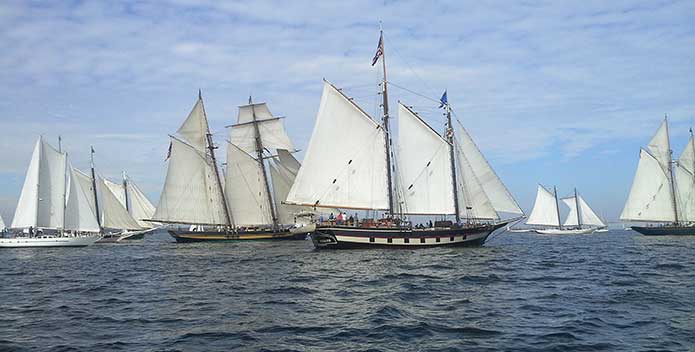In 1608, during the first exploration of the Chesapeake Bay by European settlers, it was Captain John Smith who led the way. Of the countless voyages throughout this national treasure since, it's a safe bet that most had a captain.
For decades, the Bay states resolved to reduce pollution in their local waterways to save the Bay through voluntary agreements. Time and again however, restoration efforts faltered and little progress was made. It wasn't until 2009 when the Bay cleanup effort got a captain. The EPA agreed to provide scientific leadership and oversight for a new clean-up plan: the Chesapeake Clean Water Blueprint.
Under this plan, Bay states develop and implement their own pollution-reduction plans simultaneously and EPA tracks, assesses progress, and provides assurance that all states are fulfilling their commitments. And it's working. Bay grasses are at record levels, the dead zone is getting smaller, and oysters are beginning to rebound.
But all this progress is at risk. Thursday, the House passed an amendment to the appropriations bill that funds EPA (H.R. 6147) that prohibits EPA from spending money to hold states accountable if they fail to implement the restoration plans they developed. This gutting of EPA's ability to hold stakeholders accountable is against the Bay states wishes and threatens our opportunity of leaving a legacy of clean water to future generations.
Despite this setback, the fight isn't over. Once the bill is approved by the House, it goes to the Senate. And we will make sure our leaders hear from us. Stay tuned for the opportunity to urge your Senators to block this harmful amendment.
This Week in the Watershed: Farming Oysters, Seahorse Rescue, and a Harmful Amendment
- An amendment passed by the House of Representatives threatens the success of the Chesapeake Clean Water Blueprint. (Baltimore Sun—MD) BONUS: CBF Statement
- A new EPA rule on coal ash threatens water quality and public health. (Augusta Free Press—VA) BONUS: CBF Statement
- A young family's rescue of ten seahorses in Virginia Beach is a positive sign of recovering water quality and underwater grasses. (Virginian Pilot—VA)
- To help restore the Bay's native oyster population, CBF is embracing oyster aquaculture by establishing the Shellfish Growers Network. (WMDT—MD)
- Volunteers at CBF's Maryland Oyster Restoration Center helped clean oyster shells to prepare them for planting in oyster sanctuaries. (Chesapeake Bay Magazine)
- The Chesapeake Bay Program released a report on the status of the Bay cleanup, finding we're on track to meet goals to reduce phosphorus and sediment pollution, but behind on nitrogen. (Baltimore Sun—MD) BONUS: CBF Statement
- The proposed anchorage of a coal ship offshore has residents in Cape Charles concerned. (Eastern Shore Post—VA)
What's Happening Around the Watershed?
July 14, 18, 21, 25, 28
- Upper Marlboro, MD: What's better than the taste of fresh vegetables, just picked from the farm? Ones you've picked yourself! Join the staff of CBF's Clagett Farm, a 285-acre working, sustainable farm, in harvesting vegetables for their CSA and workshare program. Put in a few hours work and bring home your own share of fresh produce. Register here!
July 20, 27, August 10, 17, 24, 31
- Shady Side, MD: Break a sweat and help Save the Bay—join CBF in cleaning the "homes" of the next generation of Chesapeake Bay oysters! Help restore the Chesapeake's native oyster population by cleaning oyster shells. We'll be shaking off the dirt and debris on shells so baby oysters can successfully grow on them. This "shell shaking" event is a bit of a workout but a fun, hands-on experience. With lifting involved, it is not recommended for individuals with bad backs or other health concerns. A tour of our restoration center will follow the shell shaking. Register here!
August 23
- Virginia Beach, VA: Join us for an evening of cocktails, live music, and oysters galore with a beautiful view at CBF's Brock Environmental Center. Register here!




